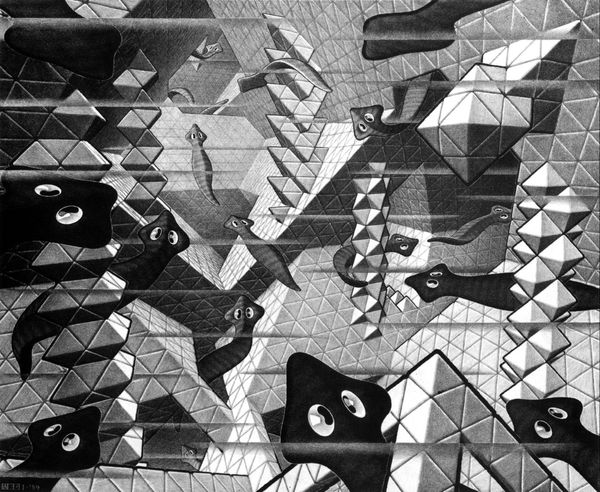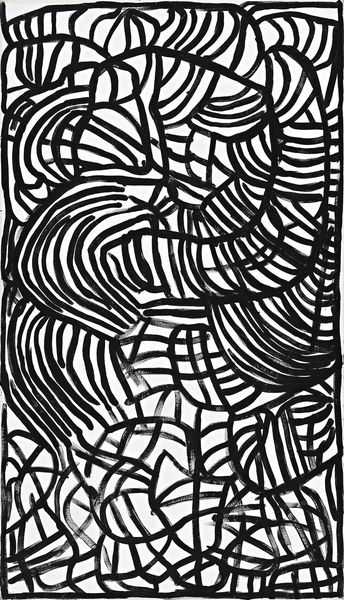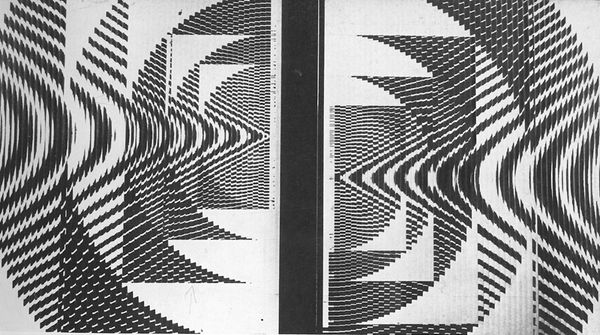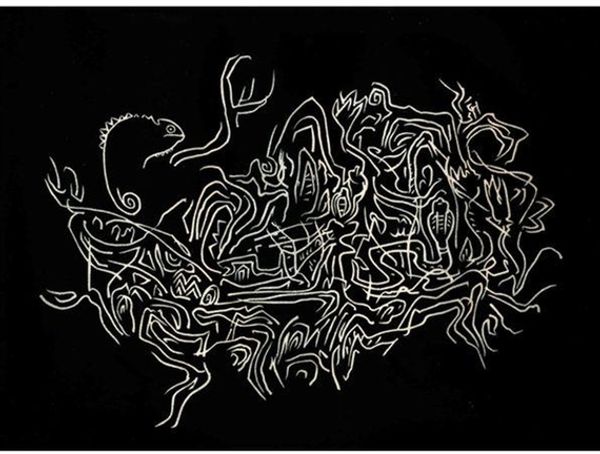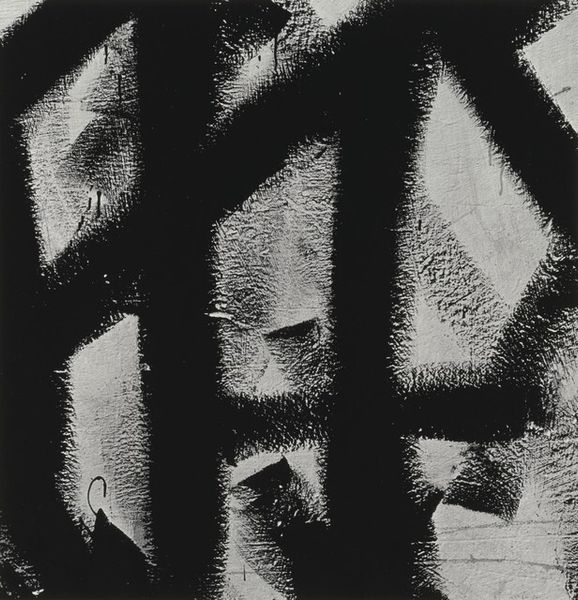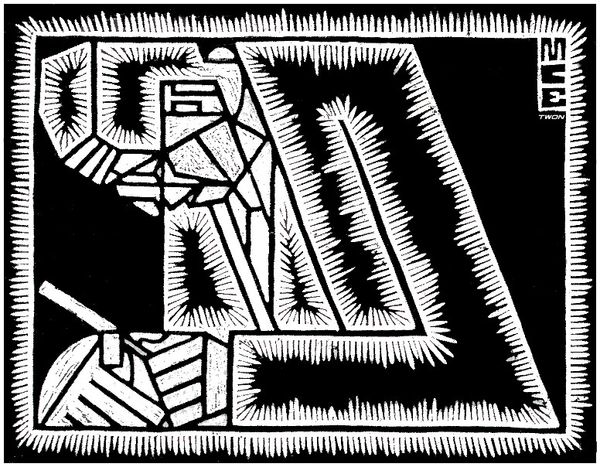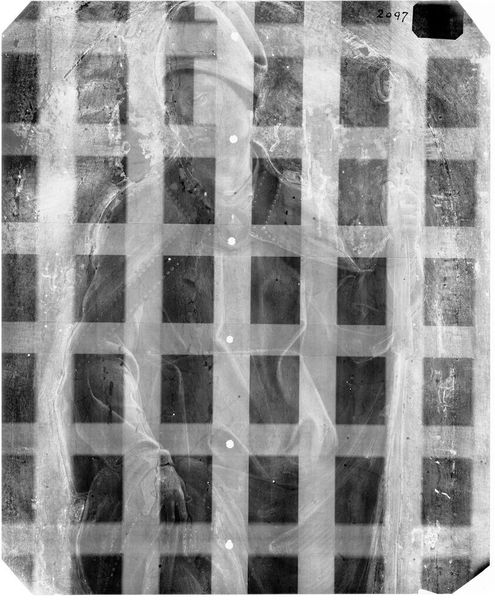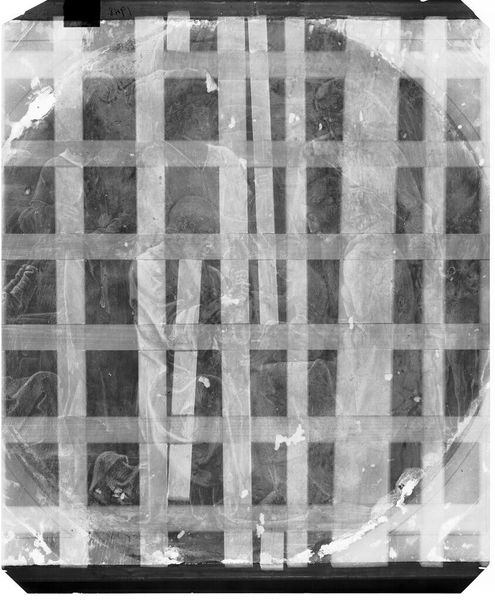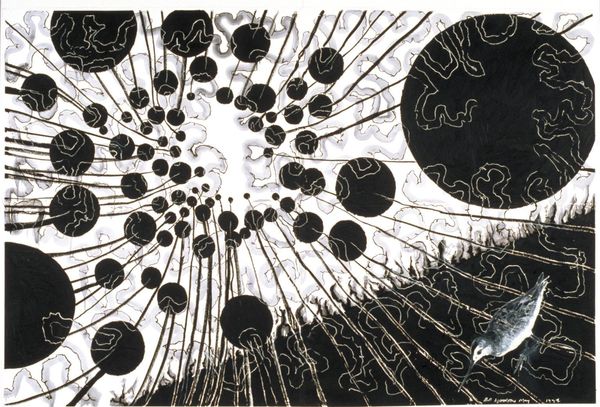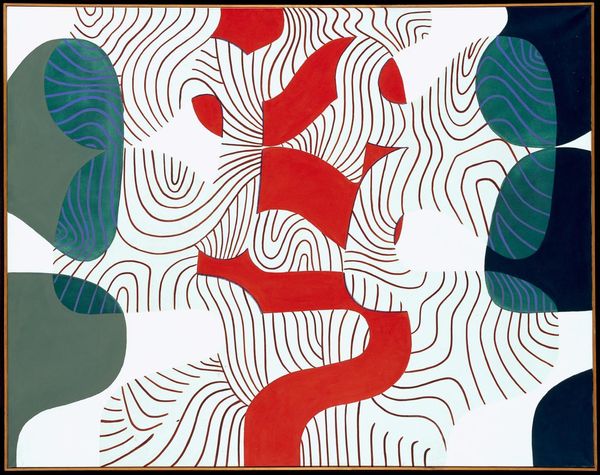
drawing, print, graphite
#
tree
#
drawing
#
naturalistic pattern
#
random pattern
# print
#
landscape
#
form
#
abstract pattern
#
repetitive shape and pattern
#
organic pattern
#
geometric
#
geometric-abstraction
#
abstraction
#
intricate pattern
#
line
#
graphite
#
pattern repetition
#
layered pattern
#
funky pattern
#
combined pattern
#
monochrome
Copyright: M.C. Escher,Fair Use
Curator: M.C. Escher's "Rippled Surface" from 1950 offers us a glimpse into the artist's fascination with patterns. This monochromatic print, made using graphite, presents an almost hypnotic interplay of reflection and reality. Editor: Hypnotic is a great word. At first glance, I’m struck by the sheer optical vibration, almost dizzying. The distorted, jagged edges where the trees meet their reflections… it’s disorienting, yet strangely captivating. Curator: The work plays with perception. Escher’s explorations often delved into representing infinity and impossible constructions. It’s also significant if we see how during this time post-war Europe was grappling with a desire to rebuild itself from abstraction. Editor: Yes, looking closer, it is fascinating how he breaks down a traditional landscape into this abstract, almost pulsating arrangement of lines. He is not just representing the landscape, but deconstructing our understanding of what is really there. The lines themselves become the primary subject. Curator: Precisely! Escher often looked at the relationship between chaos and order, reflecting broader anxieties in postwar European societies. While rooted in traditional drawing, his explorations of tessellation and pattern led him toward abstract formalism. Editor: The contrast between light and shadow creates further dynamism. The rippling effect, achieved with varying line weights, creates that feeling of movement. Also, while we can easily detect a landscape, its presentation and overall treatment point towards a deliberate obscuring. Curator: It reflects on what public image a country projects while it might have different underlayers and levels within itself. The patterns become symbolic of those dynamics in constant turmoil and reflection, reshaping and resizing to the everchanging socio-political waves and movements that take place underneath. Editor: True, the reflection serves as an allegory to society! Overall, the piece provides a beautiful synthesis. "Rippled Surface" showcases not only Escher’s incredible technical skill, but his ability to create an experience beyond pure representation. Curator: Indeed, it reminds us of the era and the societal mindset—not just a replication of visual reality, but a contemplation on our relationship to the spaces we inhabit. Editor: Exactly. The lines dance together, forming and deforming, reflecting and refracting.
Comments
No comments
Be the first to comment and join the conversation on the ultimate creative platform.
